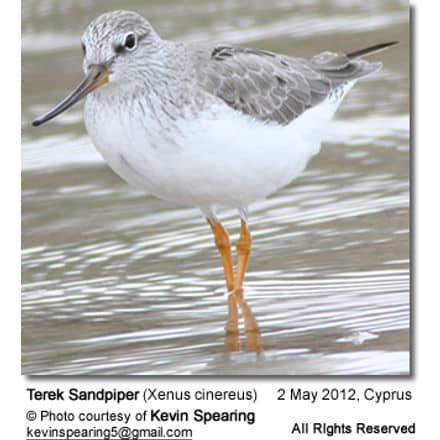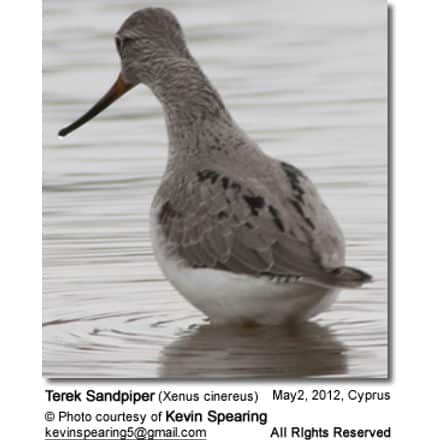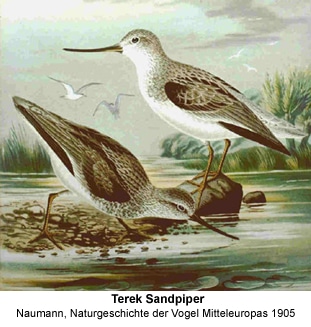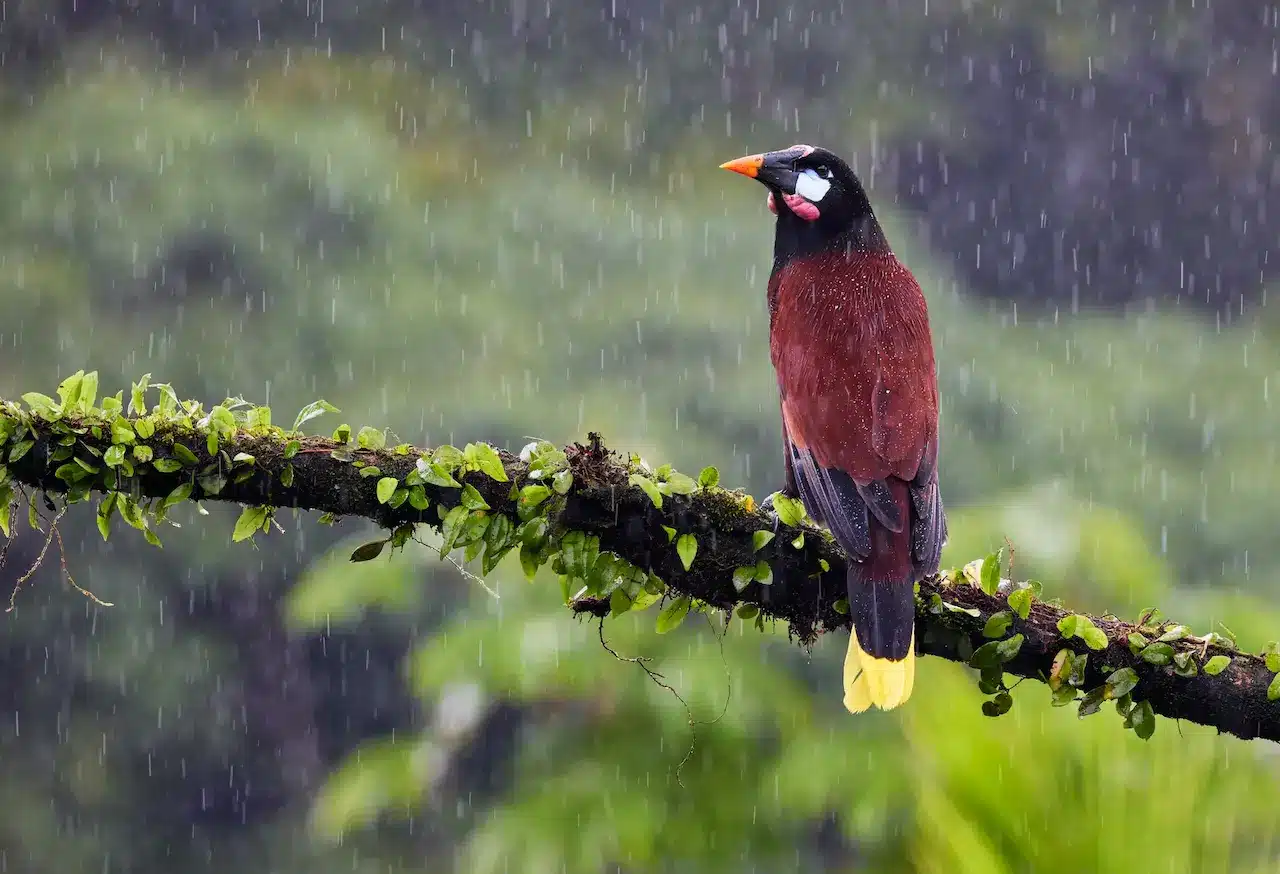Terek Sandpiper Fact Sheet
The Terek Sandpipers (Xenus cinereus) are small waders that were named after the Terek River (a major river that flow through Georgia and Russia into the Caspian Sea), where these birds were first observed.
The oldest recorded Terek Sandpiper was 14 years 11 months.
Distribution / Habitat
The Terek Sandpipers breed in southern Finland across northwestern Russia and Ukraine into Siberia, where they nest in the lowland boreal taiga zone by rivers and oligotrophic lakes, and in harbors.
They migrate south to winter on the coasts of :
Africa – from the delta of the Nile River, south along coasts of the Red Sea and Indian Ocean to South Africa, and occasionally north to western Namibia – rarely found in western and central Africa. Migrating birds have been found inland in eastern Africa.
the Middle East (Arabian Peninsula and the Persian Gulf), southern India, Malaysia, Indonesia, Papua New Guinea,Australia (mostly remaining on the northern and eastern coasts from August to March or April).
Vagrants occur in Western Europe, Alaska and the Aleutian and Pribilof Islands situated off the coast of mainland Alaska, as well as in New Zealand, where they are scarce but regular visitors. Records also exist of them visiting Norfolk Island, Lord Howe Island, Christmas Island and Prince Edward Island.
Every few years, some occur in the Neotropics (southern North America and South America), with some sightings occurring in Brazil, and as far south as Argentina.
Very few birds also made it to the lower 48 US states. On August 28, 1988, one single bird was photographed by Greg Lasley near the mouth of the Carmel River in Monterey County, and this bird remains the only California record.
Terek Sandpipers usually occur on the coast, in mangrove swamps, tidal mudflats, the seashore, islets, lagoons, coastal swamps, mudbanks and sandbanks, with occasional records inland.
They are less often seen on sandy or shingle beaches. They have shown strong fidelity to sites, returning to them year after year.
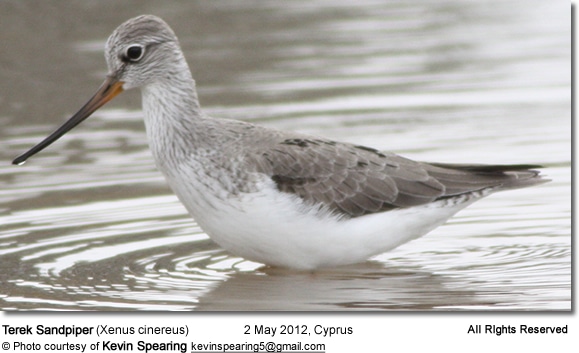
Description
Terek Sandpipers measure 8.7 – 9.8 inches (22 – 25 cm) in length, have a wing span of 14.2 – 17.7 inches (36 – 45 cm), and an average weight of 3.4 oz (95 g).
Adults have long, slightly upcurving bills that are black with dull yellow or orange at the base.
The short legs range from dull or bright yellow to orange in the adult.
The face, back and chest is grey and the abdomen is whitish; and there is a dark band on the upperwings.
During the breeding season, there is stronger and increased streaking across the head and prominent irregular dark stripes on upper scapulars (shoulder feathers).
When non-breeding, the plumage is a plainer grey-brown.
Males and females look alike.
Similar Species
Shaped like the Common Sandpiper, but slightly larger with a long upcurved bill.
In flight could be confused with the Redshank, but the rump and tail are grey.
Smaller than the Grey-tailed Tattler, with shorter wings and longer bill.
The Terek’s Sandpiper has a more upturned bill than any other wader, except for the advocet.
Juveniles
Look like adults, except with less streaking across the head and the black shoulder stripe can appear more as dashes than a line.
Diet / Feeding
Terek Sandpipers feed on crustaceans (such as crabs), insects (flies, beetles, etc.), mollusks and arachnids (i.e., spiders) and seeds.
Most of the time, they forage alone, but at times they are seen feeding in or on the edge of mixed flocks together with plovers, turnstones, stints, sandpipers and stilts.
They usually walk briskly pecking at the surface or probing in shallow water, on soft wet intertidal mudflats, chasing insects and other prey. Once they have caught something, they often run to the water’s edge to wash their prey before eating it.
Breeding / Nesting
Terek Sandpipers often breed in colonies together with other waders.
Most breeding occurs from May to August. On the onset of the breeding season, males are particularly vocal as they seek to attract suitable females. They are often seen singing loudly with fluttering wings and tail raising, as well as displaying in the air.
The shallow nest is usually situated in the open or in short grass, but always close to water. It is lined with grasses, other plant material and debris found in their environment.
The average clutch consists of 2 – 5 eggs (mostly 4) which are incubated by the female for about 23 – 24 days, while the male guards the nest. Once the young are born, both parents will tend to their needs.
The young leave the nest when they are about 15 days old.
Calls / Vocalizations / Sounds
Their contact calls are described asa rapid series of 2 – 5 short, whistling notes – a highpitched ringing ‘vüvüvü’.
Alternate (Global) Names
Afrikaans: Terekruiter …Albanian: Këmbëqirithi i përhimë …Arabic: ????? ?????, ????? ?????, ????? ????? ???? … Armenian: [Tereki Kttsar ], ?????? ????? … Azerbaijani: Morodunka … Basque: Siseta cendrosa, Terek kuliska … Belarusian: ?????-????????? … Bulgarian: ??????? ?????????? … Catalan: Siseta cendrosa, Siseta de pit blanc, Xivitona cendrosa … Chinese: ???, ???, ???, ??? …Czech: Vodouš malý, Vodouš šedý … Danish: Terekklire … Dutch: Strandloper, Terek, Terek Ruiter, Terekruiter … Esperanto: terekio … Faroese: Nevfattur stelkuro … Finnish: Rantakurvi … French: Bargette cendrée, Bargette de Terek, Bargette de Térek, Bargette du Terek, Bargette du Térek, Bécasseau maubèche, Chevalier bargette, Chevalier du Térek … Galician: Bilurico do Terek, Siseta cendrosa … German: Terek Wasserläufer, Terekwasserlaeufer, Terekwasserläufer … Greek: ????????????????, ???????????, ????????????? … Hebrew: ?????? ?????, ????? ????? … Hungarian: Terekcankó … Icelandic: Bjúgstelkur … Indonesian: Trinil bedaran … Irish: Gobadán Terek … Italian: Piro piro del Terek, Piro-piro terek … Japanese: sorihashishigi, Sorihashi-shigi … Korean: ????? … Latvian: Maz? puskuitala, Pel?k? terekija, Pel?k? tilb?te, Terekija … Lithuanian: Terekij … Maltese: Beggazzina tax-Xifa … Norwegian: Tereksnipe … Polish: Leczak, ??czak, terekia, Terekia szara … Portuguese: maçarico-de-Terek, Macarico-sovela, Maçarico-sovela, Perna-vermelha-escuro … Russian: Morodunka, ????????? … Serbian: Krivokljuni prudnik, ??????????? ???????, ?????????? ??????? … Slovak: Brodnk sivý, Brodník sivý, kalužiak obrátenozobý, kalužiak obrátenozobý (brodník sivý), Kalužiak vyvrátenozobý … Slovenian: sabljasti martinec … Spanish: Anadarríos del Terek, Andarríos de Terek, Andarríos del Terek, Archibebe oscuro, Platerito pico curv … Swedish: Tereksnäppa … Thai: ??????????????? … Turkish: Sar?bacak, sarybacak, Terek Düdükçünü … Ukrainian: ????????? … Valencian: Siseta de pit blanc … Vietnamese: Cho?t chn màng bé …Welsh: Pibydd terek

